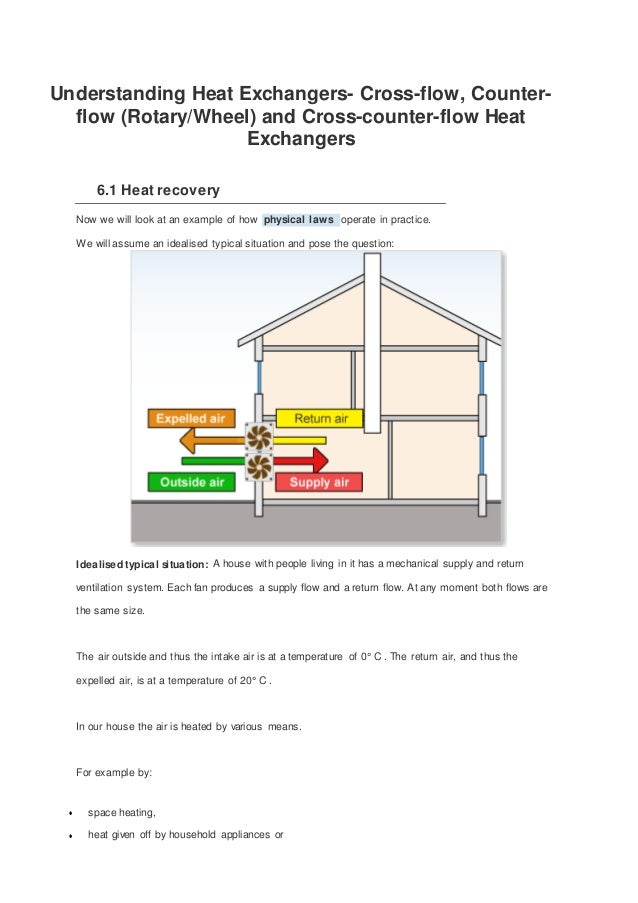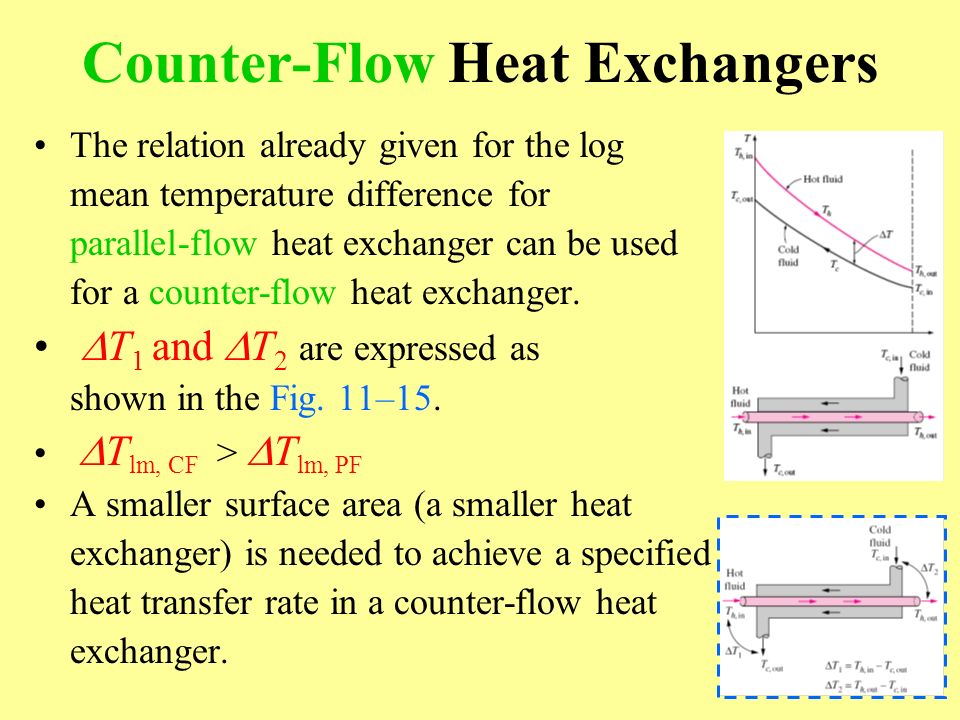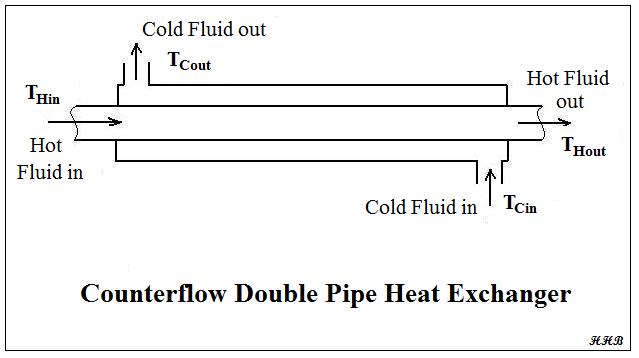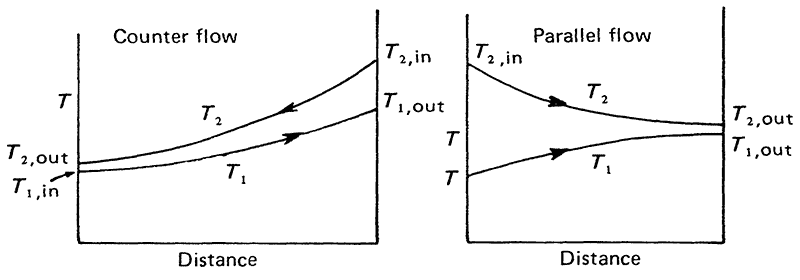In parallel flow heat exchangers the two fluids enter the exchanger at the same end and travel in parallel to one another to the other side.
Counter flow heat exchanger example.
A thermoconductive membrane or an open section allows heat transfer between the two flows.
We combine these two types together with an index n to indicate the flow direction of fluid 2.
There are three primary classifications of heat exchangers according to their flow arrangement.
In the parallel flow arrangement of figure 18 8 a the hot and cold fluids enter at the same end flow in the same direction and leave at the same end.
The counter current design is the most efficient in that it can transfer.
Crossflow parallel flow and counterflow heat exchanger configurations are three examples.
For a parallel flow heat exchanger n 0 and for a counterflow heat exchanger n 1.
The direction in which the two fluids travel through the heat exchanger can be either parallel flow or counter flow.
One starts off hot at 60 c the second cold at 20 c.
A cocurrent heat exchanger is an example of a cocurrent flow exchange mechanism.
Two tubes have a liquid flowing in the same direction.
The simplest heat exchanger is one for which the hot and cold fluids move in the same or opposite directions in a concentric tube or double pipe construction.
In a shell and tube heat exchanger coolant usually flows through the central tube core to cool hot oil water or air which passes over and around the tubes.
Consider a parallel flow or counterflow heat exchanger consisting of fluid 1 fluid 2 and the wall separating these two fluids.



























